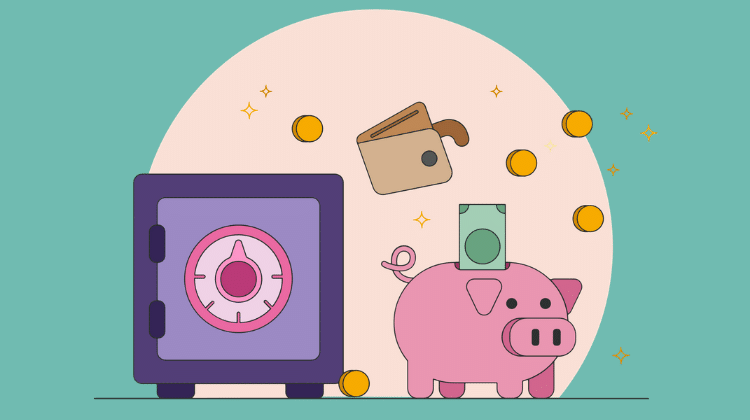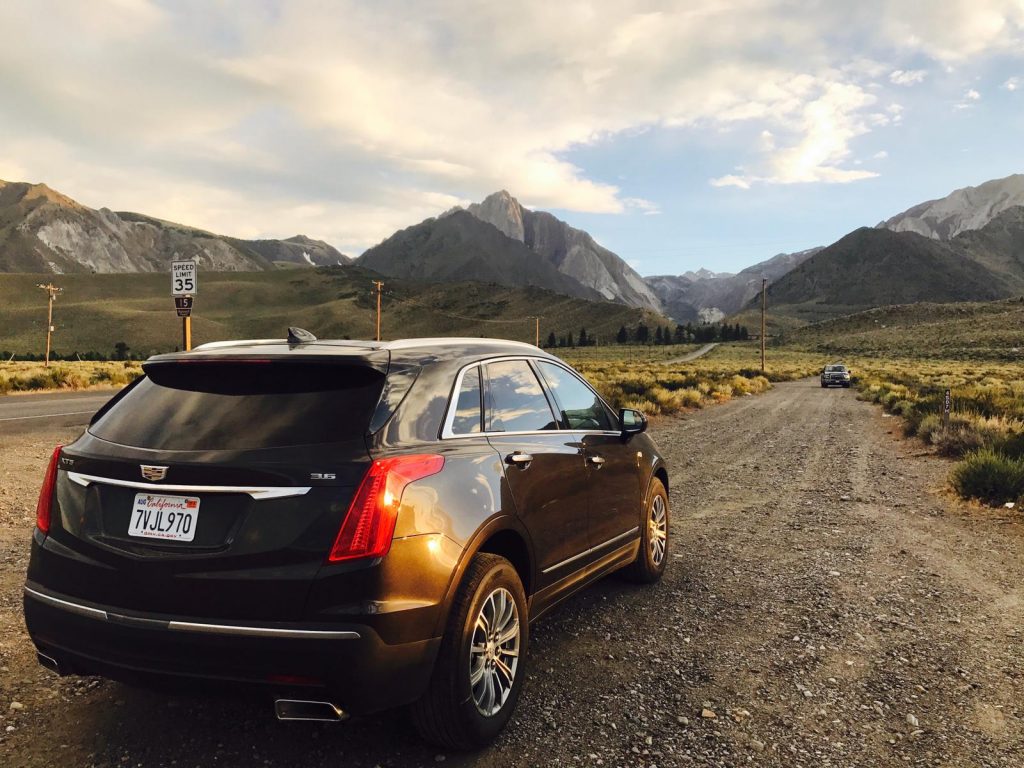
Saving money when one is making a six figure salary is easy, but how does one save money fast on a low income?
According to TheGuardian, almost 80% of Americans live paycheck to paycheck. Saving money can be a stressful issue to wrap your head around, especially when minimum wage is barely paying the bills. If you’re smart with your money, it doesn’t have to be that way. Today I will be discussing a few simple ideas that, when incorporated daily, can help turn your financial life around.
35 Simple Ways to Save Money Fast on a Low Income
1. Do not give in to ads
On average, we’re bombarded with over 4,000 ads each day. Due to the growing online e-commerce presence, marketers are getting better by the day in targeting their potential customers.
It is very easy to give in to shiny advertisements, clicking through and purchasing a few products here and there.
The first question you should ask yourself is – Do I really need this? If I hadn’t seen this ad, would I still have purchased it anyway?
If your answer is still yes, then practice exercising the 72-hour rule.
The 72-hour rule says: the longer you postpone something the less likely it is that you’ll actually want it. In other words, when you postpone buying something for longer than 72 hours, you usually have found enough excuses to not want it or simply have forgotten about it.
With helpful tools like the 72 hour rule, making purchasing decisions will become easier the more you practice restraint and mindfulness.
2. Stop mindless browsing on online stores
I’ve noticed that a lot of people struggle with scrolling through online stores when they’re bored. With all stores offering free shipping and 30-day return policies these days, it can be difficult to say no.
When we’re mindlessly browsing on online stores, we’re not looking for a certain thing most of the time. This leads to buying unnecessary items that we don’t really need.
Substituting this habit with reading books or cultivating new hobbies in your free time can be a good way to keep yourself occupied.
3. Always have a shopping list
Having a shopping list before you go grocery shopping can be a big money saver. When you have a list, you know exactly what you need from the store.
In contrast, without a list, you will typically end up making impulse buys or unplanned purchases – all of which cost money.
Therefore, always create a list before you go shopping, and most importantly, stick to it.
Also, maximize your savings by using the right cash back credit card for grocery stores.
We use the no annual fee Amex Blue Cash card for all our grocery expenditures.
4. Move on from television
On average, a TV subscription can set you back over $1200 every year in the US. That’s a huge chunk of potential savings if you simply cancel your cable subscription.
There are other financial benefits to this – less exposure to persuasive ads, a lower electric bill, more time to work on something else – like an online business.
If you still want your daily dose of quality entertainment – Get a Netflix premium account with 3 friends for just $4 per person each month. If you already have an Amazon Prime account, you have free access to Amazon Prime Videos.
Entertainment does not have to be expensive.
5. Stop eating out, Invite friends over
The average American household spends about $3,000 a year dining out, according to the Bureau of Labor Statistics (an individual spending only on themselves counts as a household, too).
The number obviously varies with where you live, with prices being higher in cities with a high cost of living.
You might be thinking “there’s no way I spend that much!” So let’s take a closer look.
If you eat out 5 meals a week spending an average of about $12 per meal, that’s $60 a week or about $3000 a year. It adds up.
Stop eating out, and instead, invite friends over for potluck or cookout.
There are other benefits of cooking at home than just saving a lot money. When making your meals at home, you know exactly what’s going into your food.
Over time as you get better at cooking, you may find yourself with a truly fulfilling hobby. Trying new recipes and new ingredients every week is a great creative outlet.
Also, if you spend some of your time cooking meals on the weekend, you can easily store or freeze this food for quick and easy meals throughout the week.
If you’re thinking you might not a very good cook, there are unlimited online blogs and Youtube channels out there on literally every style of cuisine. Learning how to cook has never been easier.
6. Downgrade your internet plan
I remember when I first set up the internet at home back in the late 90’s, the download speed was 28 kbps. When you have speed like that, opening the simplest site, like Google, could take minutes! At that time, upgrading to a faster internet plan was a necessity.
It is not a necessity now. Faster plans can seem tempting, but are they really needed?
With just 10 Mbps, one can simultaneously stream 2-3 HD quality videos on different devices.
What you really need is to invest in a good quality modem and router. With these additions, one will experience much faster speed on an extended range, all while load balancing over multiple connected devices.
7. Don’t hold on to cash
If you tend to hold on to your cash, or putting your money in a checking or regular savings account, you are continuously losing value on that money due to rising inflation. According to an inflation calculator, the US economy has seen 95% depreciation of the US Dollar in the last 100 years.
Unfortunately, simply saving your money is not enough, as it is losing value over time due to inflation. It might be the right time to start thinking about investing.
Investing doesn’t always have to be risky. I have written an entire article on the safest and risk free investment strategies to consider putting your money into.
By doing this, your money will be earning enough interest to keep up with and beat the US inflation rate.
8. Travel Hack for free vacation
Vacation expenses can take up huge chunk off your savings, especially if you have a family. It is also very important to take a break from the daily grind and explore what the world has to offer.
Did you know that you could save thousands of dollars by travel hacking to dream destinations around the world for low or even no cost at all!?
Bonus: If you want to learn the secrets of traveling for free, download the Ultimate Travel Hacking Guide and follow the step-by-step process (Coming Soon. Subscribe below to get notified first).
9. Rent out a room
Housing is by far the most expensive expenditure in the US. More than half of renters spend over 30% of their income on rent.
Do you have an extra bedroom in your house or apartment that is not being used? Use a Rent Hacking technique and rent out part of your home on Zillow rentals or Hotpads.
This can save you a lot of money over time and contribute to your rent or paying off your mortgage.
Before signing a lease with any potential roommates, take the time to do a background check and full interview. Remember, this person will be living with you in your home. Safety is a priority.
If you are not comfortable signing a long-term lease, try renting out a room on airbnb. With Airbnb, you get to choose your flexibility and approve your guests.
10. Sell things you don’t need
If you were to go through your closet right now, I’m sure you could find at least 10 things you would be willing to part ways with.
Consider craigslist or ebay to sell the clutter around your house. Your junk may be way more valuable than you thought.
By downsizing and adopting more of a simplistic lifestyle, you not only save money by not spending, but you may realize that you do not need as big of a home as you currently are paying for.
11. Lower your heater bill during winter
When the colder months start rolling in, our first instinct is to crank up the heat. Because of this, the typical U.S. household spends about $600 on simply heating their house every year.
Unless you have pets in the home who need some heat, consider setting your furnace on a timer. This will keep your space warm when you need it, and cooler when you are away.
In more temperate climates, for example Seattle, the weather does not get too cold, save for a few months. Some winters we get away with not using the heater at all and choose to just bundle up instead!
12. Unplug electronic items when not in use
According to Department of Energy, 5% to 10% of your residential electricity is sapped by devices that are plugged in 24 hours a day. This is especially true for bigger items such as desktop computers and televisions.
It can be a hassle, but if you remember to unplug these items when not in use, this will save you some cash in the long run.
If it too much to do on a daily basis, remember to always unplug everything when you will be out of town for an extended amount of time. No need to pay for that electricity if you will not be using it!
13. Make a list of food you already have in the kitchen
If food waste is a problem you face often, try writing down all the food and meals you already have in the fridge and freezer.
By doing this, you are keeping yourself aware and being mindful about what you decide to eat. Food items that previously sat in the back of the freezer can finally be remembered and eaten.
It is also helpful to keep your leftovers at the front of your fridge, with the condiments and other longer-lasting food items in the door or closer to the back. This way when you open the fridge, the food that needs to be eaten will be right in front.
14. Buy used when you can
When you are in need of a new item, be it an electronic, kitchen item, or clothing, there are many ways to save money.
For example, if you are considering buying a new phone, make sure to check online sites, such as Ebay, before you go right to the source and pay full price.
I personally have never bought a new Iphone (but have owned many), If you take the time to search through Ebay or Craigslist, you can usually find new, unopened, insured phones for $200 to $300 less than they would cost at the store.
Also, prices are negotiable when you’re buying from a person, however, it is not when you’re buying from a store.
There is no point in buying new when there are others who are looking to get rid of the same items you need. Expensive electronic items such as cameras, game consoles, televisions, and laptops can be found in great conditions with months of manufacturer warranty left.
When searching for clothing or household pieces, stop in to your local thrift stores. Goodwill and Value Village are two organizations that sell previously used items for a fraction of the cost. If you take the time to look through the wares, you can sometimes come across designer items and almost-new household items.
15. Go out to places that don’t cost money
When thinking about going out for the day, do a little research and find fun things in your area that do not require payment.
This could include local events like free concerts or farmer’s markets, window-shopping downtown, camping at national parks or even hiking a nearby trail. Once you figure out how you like to spend your free-time, you will find many ways to do it for free.
There are so many options out there, you just have to look for them.

16. Take public transportation
If carpooling isn’t your thing, consider taking your area’s public transportation. Whether it be buses, trains, or subways, every city and town will have some way for people to get around.
Making the choice to take public transportation has many benefits.
Firstly, you do not have to worry about finding parking. One of the greatest feeling for me, a city dweller, is to not even have to think about driving the streets searching for a spot that isn’t timed, expensive, or way too small of a squeeze. Taking the bus will easily transport you one spot to the next.
Secondly, public transportation is cheap. While you do have to pay for each ride you take, this expense may not even come close to the price of a car, the price of gas, the price of parking, and the price of maintenance combined. There are also usually way to purchase some form of “frequent flyer” pass that gives you a discount on your fare.
Lastly, it is simply just better for the environment. The more people take public transportation, the less pollution we have going out into atmosphere and the less we negatively impact our world. Public transportation is the most ethical form of transportation.
17. Turn off the lights
According to Energy Star, the average home has 40 light bulbs. The cost to light your home accounts for about 20 percent of your electric bill, costing the average homeowner $200 per year.
Now I’m not saying that you do not need light, but get into a basic habit of turning them off when they are not in use. During the day, try to use natural light as your main source of lighting as much as possible.
Also, not all light bulbs are created equal. Incandescent bulbs, the oldest lighting technology still in use today, is the least efficient and most expensive to operate.
CFLs, on the contrary, can be a very cost effective option. They consume less than a quarter of power compared to incandescent bulbs, and has 7 times longer average lifespan.
18. Get a wholesale membership
Where ever you may live, there is probably at least one wholesale club you can visit to purchase goods.
When purchasing from one of these clubs, for example Costco or BJ’s, you will be buying in bulk. What that means is that instead of buying one product at a time, you will be buying multiples of the same product for a wholesale price.
By buying a larger amount of an item, you most likely will get by longer without having to replace it. This cuts down your frequency of grocery trips tremendously.
When your grocery list is well planned out, you could go a few weeks without having to go grocery shopping, therefore also decreasing your chances of impulse buys occurring.
19. Carpool to work
Consider carpooling with friends or coworkers whenever possible. If you happen to work in a busy area, the amount of time spent looking for parking can sometimes equal your whole commute time.
In addition, free parking is usually extremely limited. If you chose to pay for parking, those cost can add up quick. Depending on the area, you could be paying up to $15 to $30 a day just to park.
Carpooling also has environmental perks. The less cars that are driving around, the less pollution and exhaust will be pushed into the air, therefore lowering your carbon footprint.
There are several carpool apps to take advantage of if you do not know of anyone personally who is looking to carpool. Scoop, Uber, Lyft, and Waze Carpooling are just a few of the options out there.
20. Make your own coffee
For some people, a stop at the local coffee shop is part of their morning routine. When added up, a $3 coffee a day, which is on the cheaper side, could cost you $1100 a year!
If you do not own one yet, seriously consider buying your own basic coffee maker. These can run you as low as $20 and save you thousands of dollars over the years.
If you like espresso drinks, easy-to-use espresso machines are readily accessible. Depending on the brand, a one time purchase of as low as $150 will get you the same latte you just paid $7 for, all in the comfort of your own home for years to come.
21. Cancel subscriptions you don’t use
Make sure to keep track of your subscriptions and the amount you are being billed each month.
These subscription companies almost certainly rely on you forgetting about the monthly payments over time. It is so easy to lose track of the dollar amount being deducted, and it almost feels like we are getting free stuff once a month.
These subscriptions can be made up of makeup items, gift box, magazines, pet supplies, and so many more. How much of these do you regularly use? Are you truly getting value out of paying hundreds of dollars a year for these items?
Along those lines, if you rent a modem and router from your internet provider you may be paying too much.
For what it costs in a year to rent these items, you can buy your own high quality modem and router. With higher quality, you will get a better performance, as well as items that will last throughout the years.
22. Try to fix things yourself
One way to majorly save is to learn how to fix things yourself.
Specifically, this includes your household appliances and your car.
One of the ways we lose a lot of money is through accidents and unforeseen circumstances. When you are in need of some help quickly, you don’t care what you have to pay in order to solve the problem.
Get in the habit of tinkering with your appliances and figuring them out. It can be a fun sort of puzzle if you choose to view the situation in a positive light. What can I learn from this? Plus, once you fix a toilet or a sink, you’ll have that skill for the rest of your life.
In addition to home items, get to know your vehicle. Make sure to invest in a car jack, a spare tire, jumper cables, and any other emergency repair items your vehicle requires.
When something goes wrong on the side of the road, you can be confident that you are self-sufficient and do not have to pay the heavy tow, repair, and replace fees that these emergency services charge.
If you have roadside assistance written into your insurance, make sure to be aware of the fine print and exactly what services your insurance will pay for in order to avoid surprise fees.
23. Love cars? Don’t buy, rent them instead
Do you like to drive expensive cars? Why buy when you can rent out a different one every time.
I am a big car enthusiast and when I’m on a vacation, I usually rent out expensive cars to get the kinks out of the way. If you’re buying these cars, it could cost you $40,000 or more, but renting them out could set you back around $40 a day.
I prefer rental car services such as Budget Car Rental or Alamo as their prices are pretty reasonable and they keep a good stock of premium cars.
Quick tip – Don’t book luxury cars directly as they’re ridiculously inflated on the sites. First, Book any low end sedans online and request for an upgrade when you’re picking up the car. This way you’ll be paying way less for the same car than the inflated price that is listed on the website.
The upgrade differences are easily negotiable. If lucky, you may also get the upgrade for free.
Using this strategy, I was able to rent out a Cadillac XT5 for a week in California for $60 a day!

24. Hunt for coupons before you purchase
Nowadays, shopping online is the new normal. Before you checkout, make sure to search online for any coupons or coupon codes that a website might be running at the time.
There are coupon apps, for example Honey, a Google Chrome extension. Once you’re on the checkout page, Honey finds discount coupons automatically and applies them to see which one works. This requires no extra work on your part and gives you all the benefits.
Why pay full-price when you can easily get a major percent off of your purchase? All it takes is a few extra minutes and little searching around.
25. Set up credit card auto-payment
With our busy schedules these days, it can be hard to remember deadlines. If you happen to have multiple credit cards, bills, or payments that are due on a monthly basis, set up reminders a few days ahead of time,
A simpler option would be setting up auto-pay on all your bills. If you are financially stable enough for money to be automatically withdrawn, auto-pay is a great way to pay your bills on time without having to worry about it,
Missing a payment can have some negative effects, it can negatively affect your credit and you’ll be charged a late fee of $25 – $35
26. Don’t buy new college textbooks.
Books, in general, are one of the most overpriced items. They have a markup of around 40%.
It gets even worse when it comes to college textbooks. Schools and professors usually have mandatory books that are needed to complete their course, often requiring a certain edition as well.
Publishers tend to jack up the prices on new editions, which usually are just the exact same textbook with the chapters rearranged and the review questions slightly altered. Professors discourage the purchase of older editions and promote the purchasing of textbooks that range from $140 to over $200, depending on the subject.
The average undergrad spends $1,240 per year on books and supplies, according to College Board. That’s almost $5,000 over the course of a four-year Bachelor’s Degree. Not to mention, this is in addition to the already over-priced cost of admission to college and higher education.
In order to avoid these soaring costs, try using libraries as much as you can or buy used books at a fraction of the price from thriftbooks.com or other used book stores like it. You can usually find other students or flyers around campus that are selling used textbooks.
27. Downsize your home
Rent is by far the biggest expense people deal within the United States. Due to the amount of stuff we have, sometimes we feel like we need more space than we actually need.
Instead of renting a large house or apartment, consider downsizing your home to a cheaper space that meets your needs. The rent will be cheaper and you will have more money to put into savings and/or investments.
Another perks of a smaller space is that you are somewhat forced to have less stuff. Anytime you have a chance to downsize the amount of physical things you own, take it.
Clutter in your house does nothing but clutter the mind!
28. Price match
A lot of stores, online stores and travel sites like Target, Best Buy, Priceline, etc. provide a “price match guarantee.”
What this means is that if you find the same item being sold at a different store or online for a cheaper price, they will then lower their price to match the lower price by refunding you the difference.
It can be a little scary to ask about the price difference, but this is a real service that many companies provide. Take advantage of it!
29. Buy a used car
New cars typically depreciate the minute you drive off the lot. By the time it’s a year old, the vehicle has lost nearly one-third of its value, according to Edmunds data.
The average cost to own, operate, and maintain a new car is over $9,500, according to Bureau of Labor Statistics.
“Depreciation accounts for almost 40 percent of the cost of owning a new vehicle, more than $3,000 per year,” said Robert Sinclair, a spokesman for AAA Northeast.
This is a great opportunity to look into buying a used car. First-time owners typically keeps their new cars well maintained and in good enough shape to be re-sold.
I personally purchased a three year old Hyundai Elantra in 2016 for less than half the price and it still runs like new.
Don’t be immediately turned off by the label of “used,” as you may be missing out on a great deal.
30. Find a cheaper gym if available
A gym membership is probably one of the most expensive things a person can buy. If you look at how much the average person actually uses their membership compared to how much they are paying, it is a huge waste of money.
Membership prices differ greatly depending on where you live, Prices also vary depending on the “brand” of the gym. Large gym tend to charge $50 or more per month, and usually make you sign a year long contract, with additional signup fees or annual fees.
If you do a bit of looking, you can usually find a smaller, local gym that is half the price and still has most, if not all, the same equipment as the bigger, well-known gyms.
31. Downgrade your health insurance
Check with your employer to see if they provide healthcare for families. I recommend choosing this option if available. Employer subsidized health insurance for your family could save you a lot of money.
If you are usually in good health standing, workout regularly, and/or visit the doctor only a few times a year, consider a high deductible health insurance plan. For just one individual, the difference could save you $1200 per year or more.
Make sure to weigh the expected savings against the additional sum you may have to pay out-of-pocket each year.
Stay ahead in your financial journey by taking advantage of our most recommended tools and resources
32. Match your employer 401k
Getting the most out of your employer’s 401(k) match is one of the most important strategies of retirement planning.
If you’re not doing this, you’re leaving a significant amount of money on the table.
Check with your employer to see if they match a certain percentage of the amount you contribute. It could be something like “25 percent match up to the first 6 percent”.
That means your employer will place 25 cents into your retirement plan for every dollar you put in, up to 6 percent of your gross salary for that year.
Don’t pass up on free money!
34. Shop around for auto insurance
If you think you have the cheapest auto insurance, think again. If you didn’t shop around for the lowest rates, chances are you are paying too much. By simply calling a few Insurance providers, you can save hundreds of dollars on your yearly auto insurance bill.
Always try to negotiate the initial auto insurance quote. If you persist, they could apply various discounts such as low mile driver, long driving history, alumni of local university, etc.
Also, when you choose to pay semi-annually or annually instead of monthly, that may also save you some money.
If you are a responsible driver with a paid off car loan, you can choose to go with the liability coverage only. Consider this only if your car is not super expensive to repair.
When you drop comprehensive and collision coverage, you’re solely liable for all the repair in case of any accidents or damages from theft, fire, hail, vandalism, etc.
35. Invest
When you have some money saved up, it is now time to grow it by investing and building a diversified portfolio to reduce risk.
Just saving a lot of money won’t make you rich, it is equally important to make the money work for you.
You may choose to invest in real estate, REITs, stocks, bonds, ETFs, dividend based stocks, peer-to-peer lending to name a few. It is wise to not put all your eggs in one basket, but to distribute them evenly to reduce risk.
Final Thoughts
Saving a lot of money need not always require sacrificing big on your lifestyle. It could be done by tweaking a few small habits and working on your discipline in making smart choices.
The purpose of this article is not to cut down on every little thing in your life. It is to find out smart alternatives that, if incorporated properly, can max out your savings rate and put the money back into your pocket.
You won’t see the rewards overnight, but if you stick to it, you will see the numbers grow noticeably fast.
I hope you found this article helpful. If so, please share it with your friends and family to encourage smart lifestyle.
Now the ball is in your court. Out of the 35 money wins listed in this article, what is your current score? What are the next 3 money wins you would like to achieve?
| Money Wins | Saver Level |
| Under 10 Wins | Beginner Saver |
| 11 – 20 Wins | Intermediate Saver |
| 21 – 30 Wins | Advanced Saver |
| 30 or more Wins | Pro Saver |

![How to Lower College Tuition [11 Clever Ways] How to Lower College Tuition [11 Clever Ways]](/wp-content/uploads/2020/04/how-to-lower-college-tuition-costs-1.jpg)

